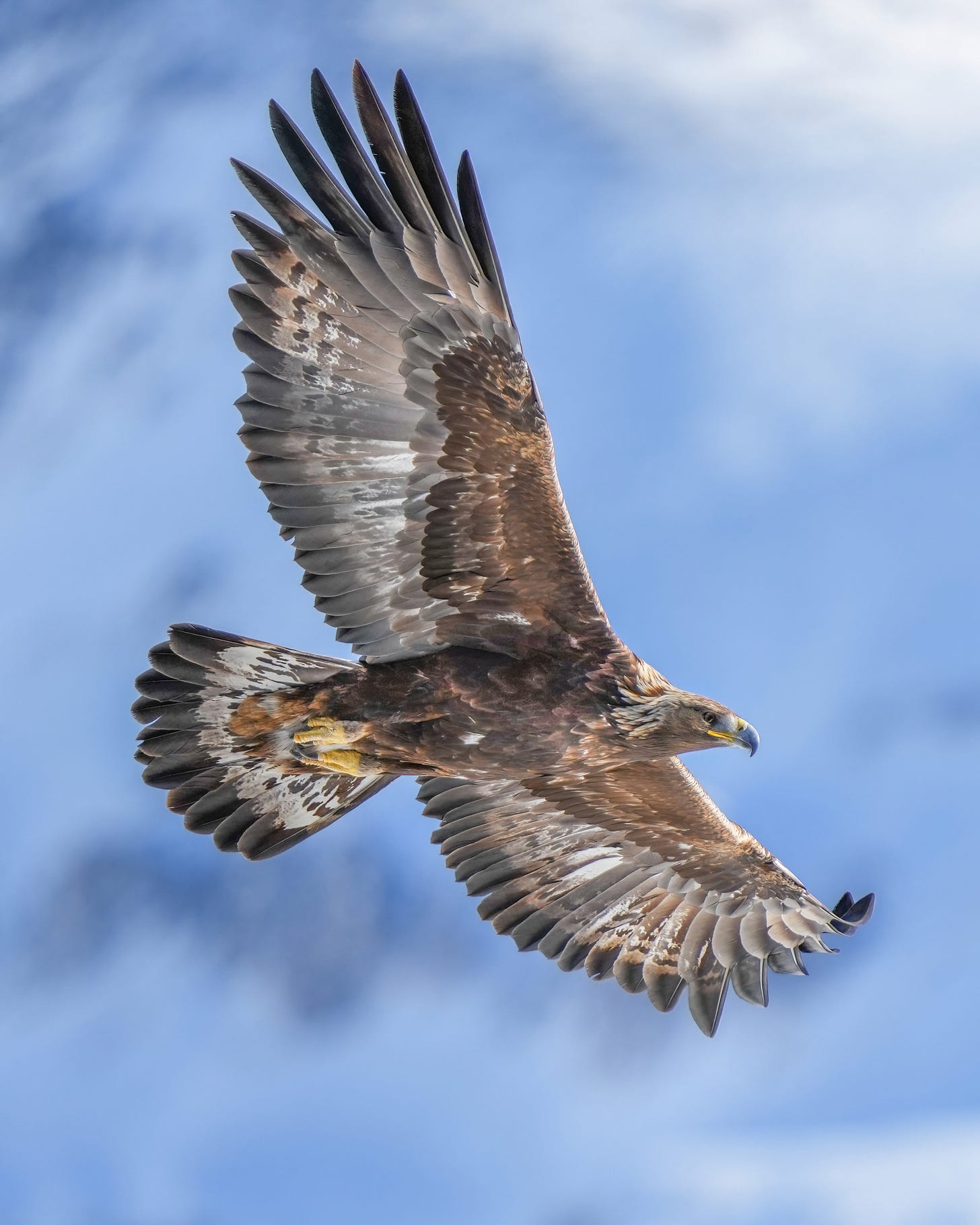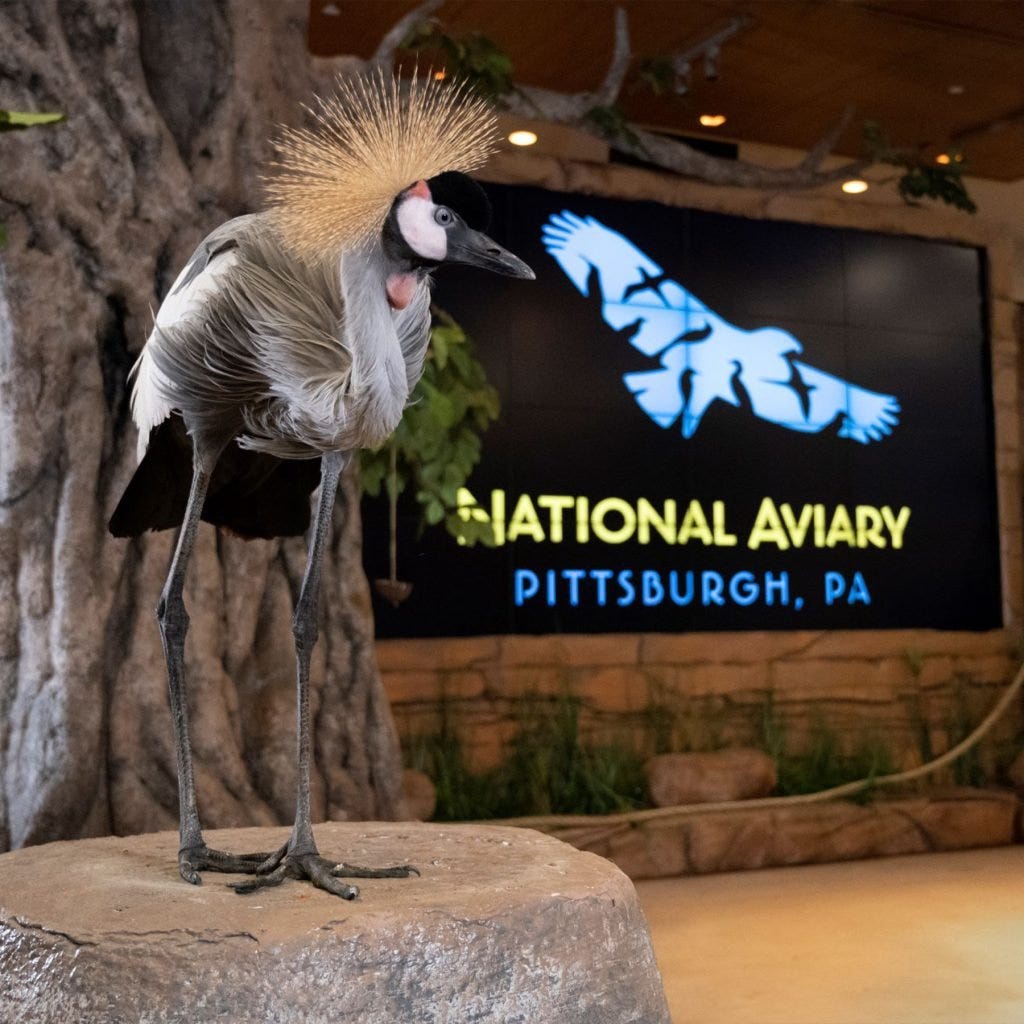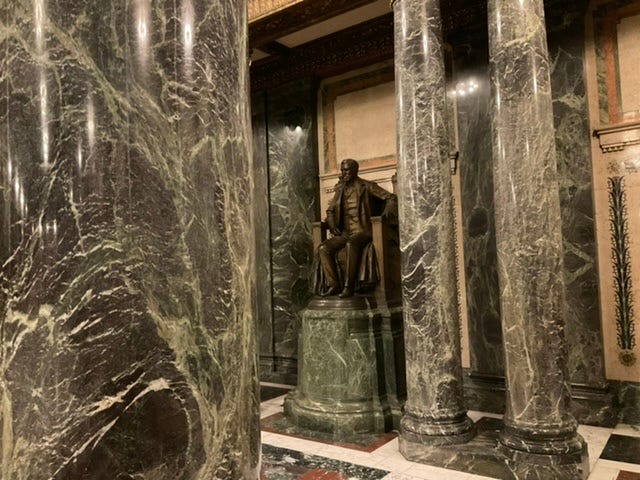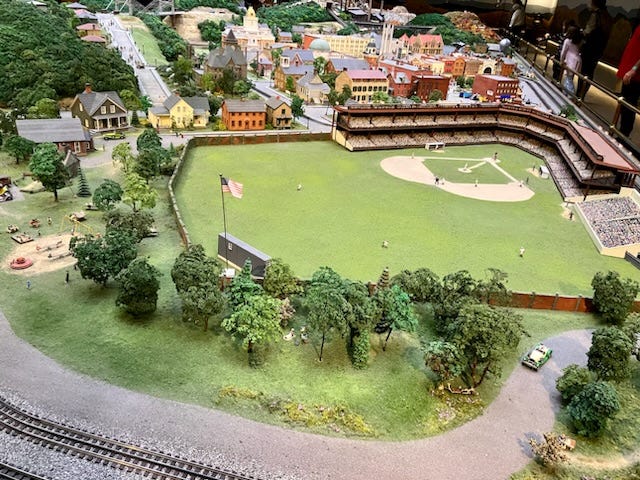Owls that are active in daylight, condors, finches, flamingos, the beautifully colorful male ringed teal, bird feeding, and—this being Pittsburgh, of course—penguins (each has their own unique voice), Pittsburgh’s National Aviary offers a range of wondrous birds. The aviary, one of the few stand-alone urban aviaries I know of and billed as “America’s only independent indoor nonprofit zoo dedicated to birds,” yielded an opportunity for this bird novice to observe and study various small, stunning and majestic birds. With a team of knowledgeable guides and a three-feet and no feeding rule, overzealous visitors are thankfully discouraged from acting up.
The Northside aviary, located in Allegheny Commons Park, features a whole display of bats with a solid, reasonable explanation for why (as bats are mammals, not birds). The placards explore the facts, including the scientific names for each species of birds. I was fascinated upon my first visit to Pittsburgh’s National Aviary on Arch Street with family. I gained essential new knowledge for my fiction writing research during the three-hour visit. I plan to return.
The walk-through approach showcases bird habitats—such as wetlands and woodlands—which re-create an experience which is at once an up-close interaction between the visitor and free-flying birds. Volunteers were solicited during the supervised bird feeding to hand-feed and encounter “many species rarely found in zoos anywhere else in the world.” Claiming to house over 500 birds representing more than 150 species from around the world, the National Aviary is a national treasure indeed. No sooner than someone asked about whether any birds had escaped when a guide kindly told the story of Kodiak, a wayward bird that cut loose and flew free for about nine days in Pittsburgh until he was returned without major hassle.
With a staff of bird teachers, researchers and conservationists, this grand city of industry’s aviary does have a few flaws. There’s no printed guide for the tourist, visitor or student (it’s a popular field trip destination for area schools). Signage is decent, though the displays often show heavy-handed propaganda about endangered species tantamount to guilt induction and charity solicitations, though there probably are endangered bird breeding programs helping to preserve bird habitats. The aviary admits that it seeks to instill “a conservation ethic that teaches the responsibility we all share in being stewards of our planet.”
This may sound innocuous, but there’s more instilling than instructing on the written materials along the aviary’s walk-through. Sadly, the National Aviary also includes a racist national zoo organization disclosure on its website pledging to discriminate based on skin color that “[we] will amplify the voices of [b]lack birders, nature enthusiasts, and community members.” That said, Pittsburgh’s aviary provides a quiet, peaceful place for birds and those who take interest in them for an excellent zoological and natural experience affording true appreciation of birds.
My favorite part of the visit was the large area designated for the golden eagle (Aquila chysaetos). This well-known bird of prey in the world’s northern hemisphere was fascinating to observe. With proportionately large, strong, powerful feet and curved, sharp talons to hunt rabbits and squirrels, I’ve learned that the golden eagle can hold a domain as wide as 77 square miles. I stood and watched an eagle for a long time. At a certain point, he gently released the talons and curved, then spread, his wings. Watching the golden eagle’s movements, motions and flight was a singularly memorable and marvelous experience.
The aviary fulfills both its mission—to inspire respect for nature through an appreciation of birds—and its vision (to “advance global conservation of birds and their habitats through education, entertainment, ecological research, husbandry, and healthcare”). And, if you’ve never seen an eagle up close, the National Aviary in Pittsburgh delivers the perfect first time.
Related Articles and Links
Points in Pittsburgh
Stories can come from indulging curiosity. For example, my most recent article for a Pittsburgh publication was born during a visit to the library. The visit’s purpose was a writing assignment and the goal was to conduct research. The place was a Carnegie library on Forbes Avenue near the University of Pittsburgh by the Cathedral of Learning. I’d been t…
Points in Pittsburgh
I attended the opening this spring of a new exhibit at the Heinz History Center in Pittsburgh’s strip district. An “immersive walk-through” of American labor artist John Kane’s “Crossing the Junction” oil painting purports to let visitors travel Pittsburgh’s topography as Kane did and explore his artistic process.
Points in Pittsburgh: Miniatures in Diorama
Miniatures in diorama have enticed and fascinated people for generations. The word diorama—a term, like so many words, which originates with the Greeks (di denotes through; orama denotes that which is seen)—came into use during the 19th century in France.
Points in Pittsburgh
A visit to Pittsburgh’s Andy Warhol museum this year is the subject of this article. With several floors of exhibits, displays and archives, there’s an abundance of material. This institution is now part of the Carnegie museums, which as far as I can tell doesn’t mean anything except that it’s bundled into their promotional and membership database and programming. There’s merely sporadic storytelling at the
Points in Pittsburgh
This Pittsburgh essay is personal and revolves around the crashing of airplanes. My life changed 25 years ago this summer when I missed a rendezvous in New York City for a trip to Europe. When I arrived at my destination in Rome, I emerged in a kind of nightmare, which I later recounted in …












Great articles Scott! Very informative, I didn't know about the National Aviary. Will have to visit sometime, maybe with you!